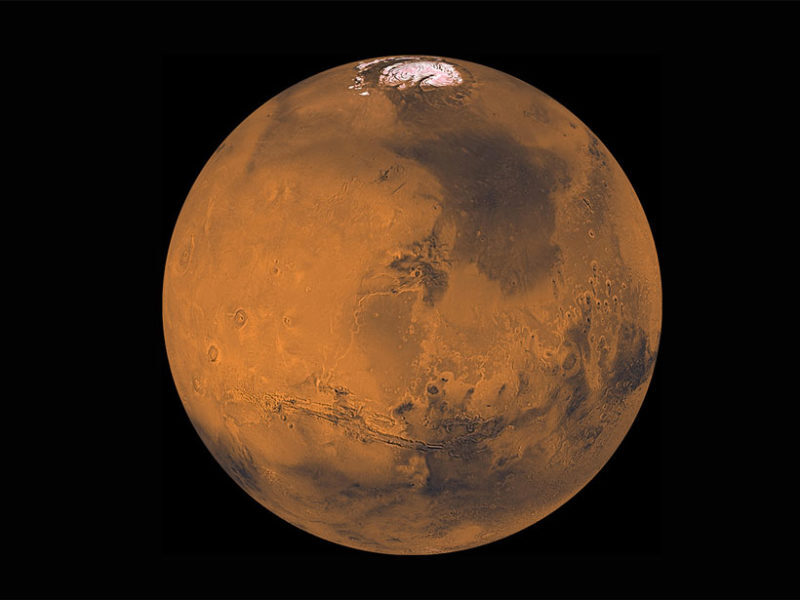
The Chandler wobble arises when a rotating body isn't a perfect sphere. This imbalance affects its spin. The result is a wiggle resembling that of a swaying top as it loses speed, rather than the smooth spin of a perfectly balanced globe.
Measurements over nearly 2 decades by spacecraft orbiting Mars uncovered that on the surface, the planet's poles wander up to 10 centimeters from the average axis of rotation, with a repeated cycle of about 207 days.
The new findings by Konopliv et al. provide new insights into the interior of Mars. The amount of time it takes for the pole to complete one cycle of the wobble reflects how much Mars's mantle can deform, providing hints about its material properties and thermal state.
"[The Chandler wobble] is a very small signal, typically," said Alex Konopliv, an aerospace engineer at NASA's Jet Propulsion Laboratory in Pasadena, Calif. "You need many years and high-quality data to detect it," he said. A previous study, for example, didn't have enough data points to differentiate the Chandler wobble from seasonal effects. Konopliv is the lead author of the new research, which was published in AGU's Geophysical Research Letters.
The Chandler wobble is one of several off-center motions exhibited by Earth as it rotates on its axis. Earth's Chandler wobble varies from 3 to 6 meters at the poles and has a pattern that repeats approximately every 433 days. Although such motion should naturally dampen over time, on Earth it persists because of ocean bottom and atmospheric pressure fluctuations.
In the new study, researchers were able to confirm the movement on Mars by calculating gravitational effects on the orbits of two NASA spacecraft circling the Red Planet: Mars Odyssey and the Mars Reconnaissance Orbiter. The large quantity of data, collected over 18 years and not available during earlier analyses, ensured that the identified wobble was intrinsic to the planet's shape and interior, rather than outside factors like seasonal melting of polar ice caps.
"It's amazing that they can detect this," said Francis Nimmo, a planetary scientist at the University of California, Santa Cruz, who was not involved in the new work. "It's a testament to what you can do with a really long baseline of really good data," he said.
Like Earth's Chandler wobble, the motion on Mars should naturally die down. Researchers don't yet know what is keeping the wobble going, but previous studies indicate it's likely due to atmospheric pressure changes.
Knowledge about the Chandler wobble provides a peek into the interior of Mars: The motion is driven by properties of the mantle, the layer beneath the planet's crust. The new results provide information about the properties of the mantle, particularly about how it deforms at longer periods, said Attilio Rivoldini, a physicist at the Royal Observatory of Belgium in Brussels and a coauthor of the new work. Such information could help guide future studies of Mars's interior by providing new knowledge about its temperature and composition. (Geophysical Research Letters, https://doi.org/10.1029/2020GL090568, 2020)
Citation: Lee, J. (2021), First detection of a built-In wobble on another planet, Eos, 102, https://doi.org/10.1029/2021EO153076. Published on 04 January 2021.



Reader Comments
R.C.